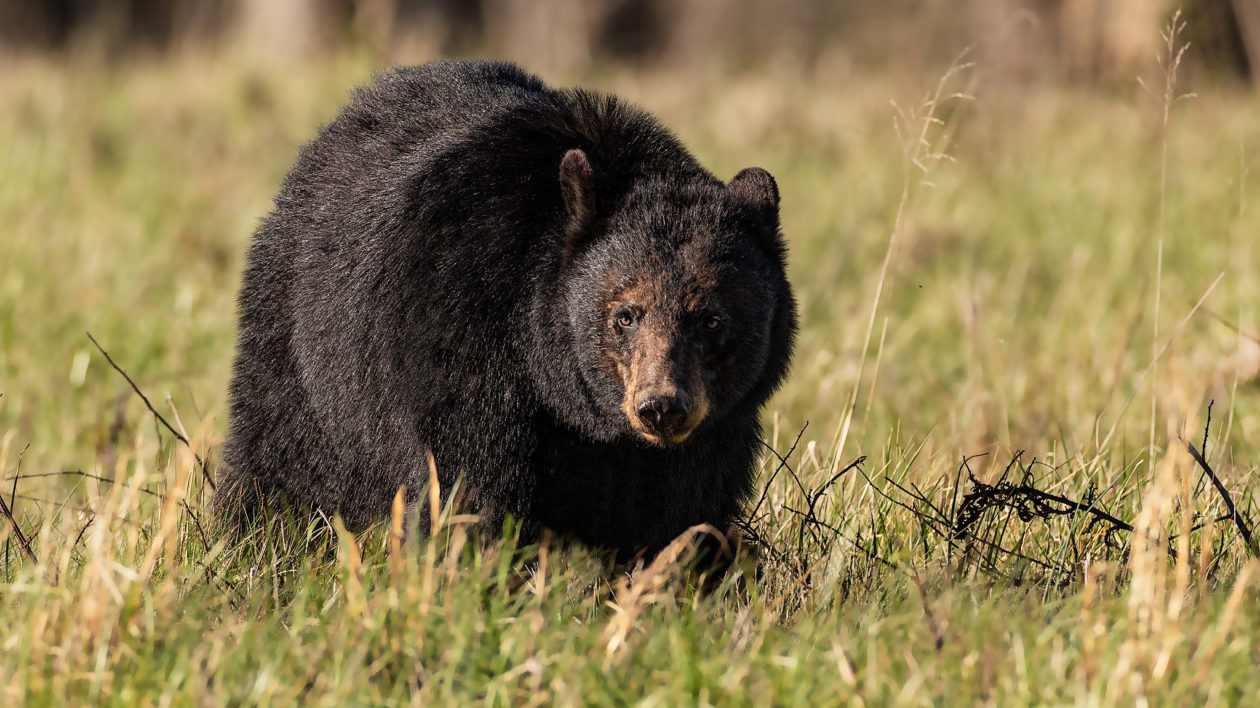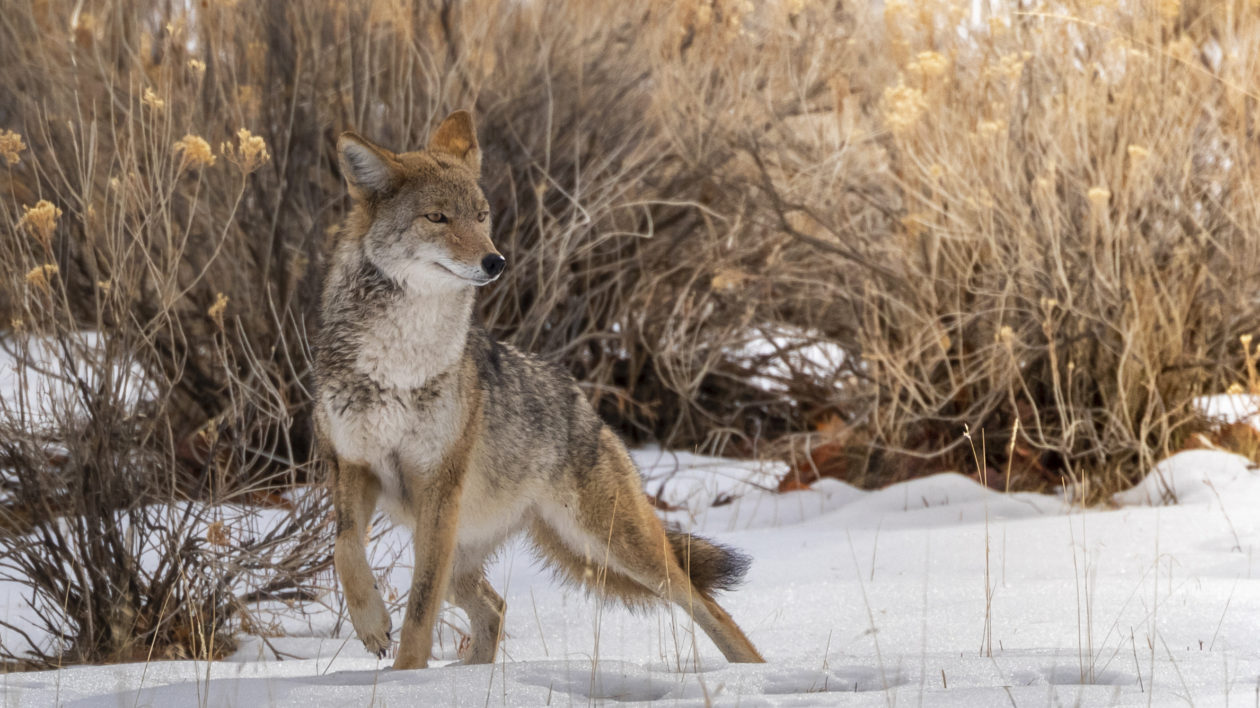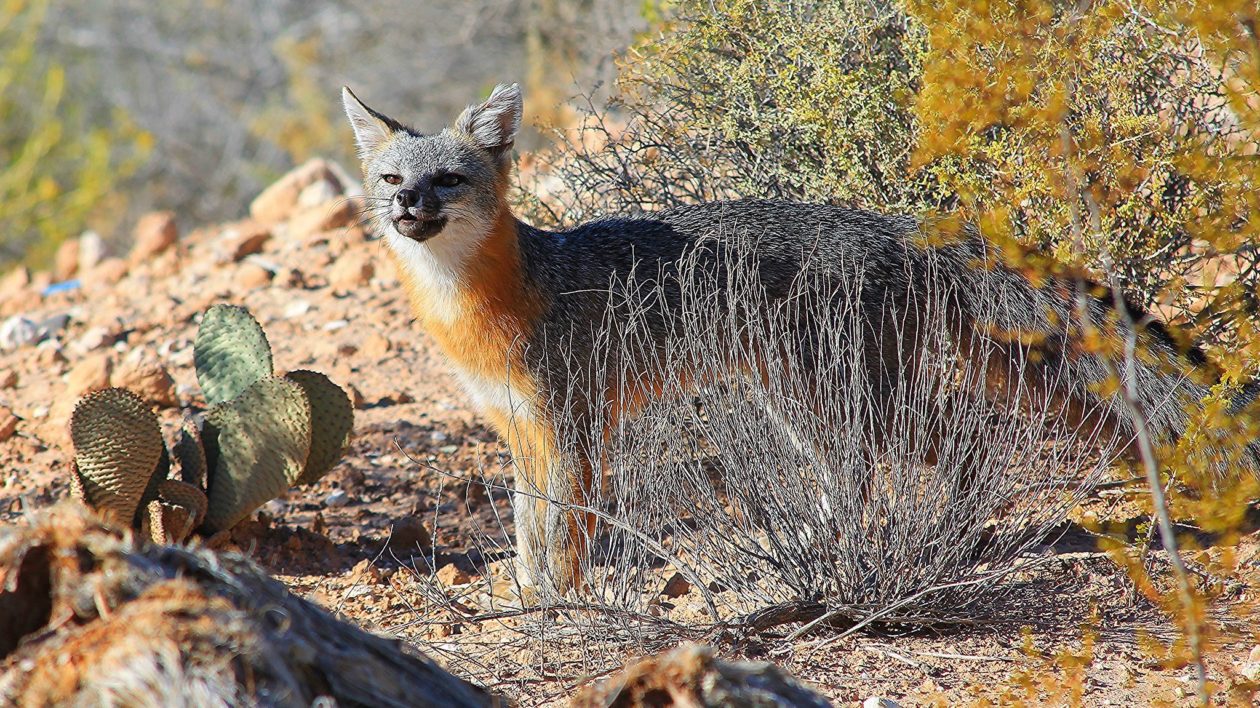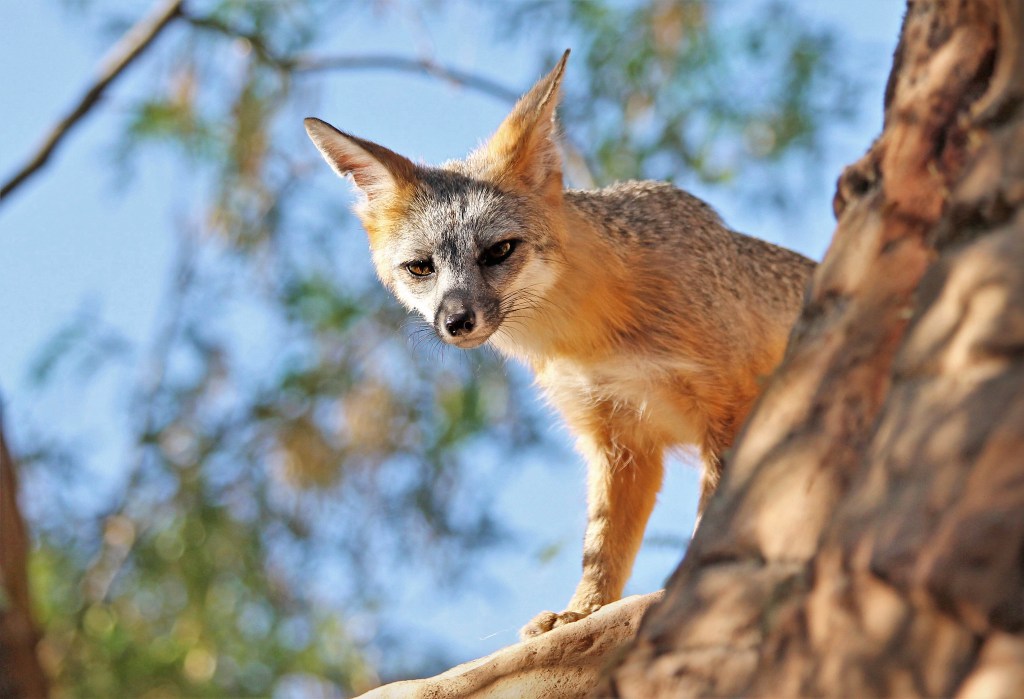I arrive in Grand Teton National Park before breakfast. There’s a light layer of late spring snow on the ground. It will melt by lunch. By dinner, a crowd of a hundred people will cluster to see grizzly bears. That mob scene is uncomfortable. Professional photographers with long lenses jockeying for space alongside tourists with camera phones wanting the same shot while two rangers try to keep a safe amount of space between the wild and the watchers.
I’ll document that chaotic scene by end of day, but what fascinates me early on is a mother fox. She’s trotting alongside my truck with two pocket gophers in her jaws. They’re straddling her mouth, back legs bouncing in time to her four-paw beat.
I know she’s heading to a den to feed pups. She’s been back and forth several times with food she procures in a meadow marked with sagebrush and lupine. She’s efficient and precise as a predator. She’s also protected. And this may be more fascinating than her hunting skills. There’s a black bear on a stout hillside just around the bend from her.
A new study suggests her proximity to the beast is planned. The bear is her buffer.
“In our field of research, there is something called the landscape of fear,” says Remington Moll, University of New Hampshire Natural Resources and Environment assistant professor. “It’s the idea that there is a pecking order and that both predators and prey will change their behavior to avoid getting killed. This work suggests that fear is important in defining the species’ roles in the ecosystem.”

The Predator Cascade
Moll’s talking about a predator cascade and it’s dictated by the top of the food chain, bears and coyotes included. Both will kill, but size determines the need to kill. A gray fox is closer to the size of a cat. A coyote is more likely to compete with a fox. A bear is less likely to bother with an animal of such small stature, but doesn’t like competing with a coyote. Bear threatens coyote. Coyote threatens fox. Coyote won’t hang around bear, so fox will to avoid coyote.
“If there is a carcass, bears will scavenge and coyotes will scavenge but bears will fend off coyotes,” Moll says. “A lot of times these competitive interactions center around body size. The closer you are in body size, the more intense the competition. Maybe the bear doesn’t see the fox as much of a threat.”

Seasonal Safety Zones
Moll worked with the Nevada Department of Wildlife, Michigan State University, and the University of Montana to research an expanding bear population in western Nevada. Black bears are increasing in the Sierra Nevada Mountains and spreading into the Silver State where they were considered extinct until a few decades ago. Many of the bears are collared so researchers know where they are. There are also trail cams in black bear core zones.
Moll’s team sorted thousands of images counting the number of coyotes and gray foxes in shots. They also recorded time of year and that sealed the deal.
What’s in the zone changes with the seasons. More foxes hang in bear zones in summer while more coyotes hang in bear zones in winter. Why? The bear, the fox’s buffer, sleeps in snow season. There’s a lack of bear presence in core zones when they’re hibernating.
Coyotes know this and move in while foxes move out. The fox is safer in bear territory than in coyote country, but safety is seasonal.

“We’ve learned more and more over the last couple of decades that predators cause prey to change their behavior,” Moll says. “Those changes can be quite large. They’re not eating each other, but they’re operating in a landscape of fear and it’s dynamic because of the seasonal mechanism.”
Trail cams snapped 111 photos of bears in summer and only 1 in winter, proof that bears are indeed out of the picture half the year. The number of coyote images increased 50 percent in winter. The number of gray fox photos decreased 80 percent in winter. Over three years of weekly observation, bear presence, or lack of it, dictated coyote and fox behavior more so than the amount of snow or food availability.
Now add us. We’re impacting wildlife more than we realize too. The bear jam I document at dinnertime happens like clockwork. Stand here: bear appears. The situation could be motivated by a grizzly sow purposely putting her cubs close to people so they’re away from an aggressive male bear that would kill cubs to get to sows. We are the bear’s buffer just like bear is the fox’s buffer.
“A lot of large predators are declining. The two exceptions are black bears and coyotes. They’re generalists. They’re expanding. They may benefit from interacting with humans,” Moll says. “Black bears in suburban areas are changing their hibernation. They hibernate less. Maybe urban is warmer or food source is better. Whatever it is, humans are altering the evolutionary strategy over a millennia of hibernation.”




Good article Kris.
Love the update on animal behavior. I often tell friends, the older I get the less I realize I know. I am sure there are numerous behaviors that we have yet to recognize.
And it starts with the tiniest microcosms all the way up to the apex predators. Thanks for your studies and the article. Always great to learn something new every day.
So interesting!! Thanks, Kris 🙂
Good expansion on Cristina Eisenberg’s and Bill Ripple’s writings. Thank you Kris, from this old retired ranger.